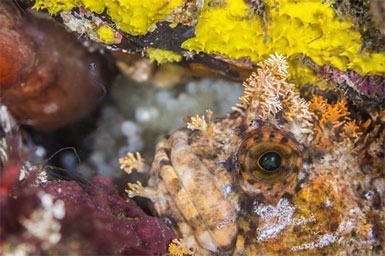In a testament to nature’s resilience, a Japanese photographer is documenting its return to oceans devastated by the nuclear meltdown and tsunami four years ago.
Already, 40-50% of marine life is back, pretty amazing since the government still allows 300 tons of radioactive water a day to be dumped into the Pacific Ocean.
Nagaaki Sato says the ocean lost its color after the event, but it is blue again. "Nature is putting forth great efforts to replenish and regrow. There is a lot of energy being expended in these waters. As one of the humans who survived the disaster, I want to involve myself with the ocean from now on and continue photographing it so that I can show its wonders to as many people as possible," he told Huffington Post Japan.
"Scaly worm shells and oysters, hoek, sea pineapples, and other creatures that cling to rock faces are increasing in number," and it has become easy to find many other species, "which might mean their population is expanding at the same rate as before the tsunami again," he says.
That gives us hope that fisheries on the west coast of the US can continue their recovery, even as the water tests positive for radioactivity in currents arriving from Japan.

Tortoises, Sea Turtles Show Signs of Return
On the other side of the world, on a Galapagos island, baby tortoises have been found for the first time in 100 years. "Our discovery indicates that the giant tortoise is once again able to reproduce on its own in the wild," researchers say in Nature.
When humans arrived in the 17th and 18th centuries, they brought rats with them that ate all the hatchlings, says the Galapagos Conservancy. After 50 years of effort, the island was declared rat-free in 2012.
And although sea turtles are still extremely endangered, dramatic population increases in some waters demonstrate that recovery is possible everywhere, says Yale 360.
Six of the major green turtle nesting populations in the world have been increasing over the past two to three decades following protection from human hazards such as exploitation of eggs and turtles. Under new protections, hawksbill have reappeared off Honduras, El Salvador, and Nicaragua; and nesting is up substantially in places like Brazil, Barbados, and the West Indies. Leatherbacks are doing much better in Costa Rica and Panama. On Florida’s monitored beaches leatherback nests have increased from 27 in 1989 to a record 641 in 2014.
Read the full article about sea turtles:
